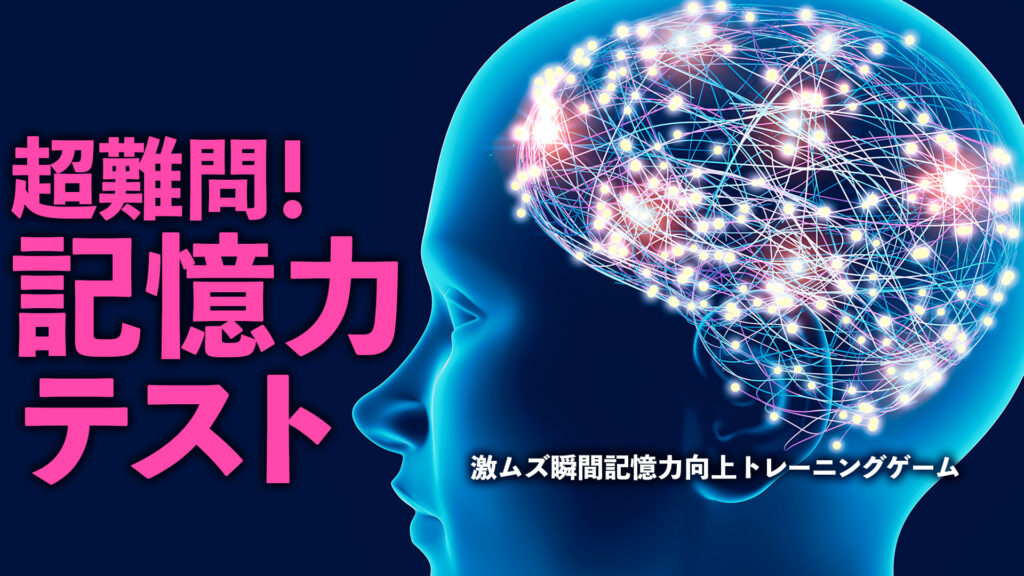Have you ever marveled at someone who seems to recall every detail of a conversation or the contents of an entire book, as if flipping through pages in their mind? This extraordinary ability is known as eidetic memory. While it may seem like something out of a movie plot, real-life examples can be just as fascinating. Understanding and testing your own eidetic memory can unlock new potential for learning and retention.
In this guide, we’ll take you through the essentials of eidetic memory testing—from what it is to practical exercises that can enhance your abilities. Whether you’re curious about improving your cognitive skills or simply intrigued by how memory works, there’s something here for everyone. Ready to discover the limits of your mind? Let’s dive in!
What is Eidetic Memory?
Eidetic memory is often described as a photographic memory. It allows individuals to recall images, sounds, and objects with remarkable precision after minimal exposure. Unlike typical memory, which fades over time, eidetic memories can remain vivid for days or even longer.
This rare ability isn’t just about remembering facts; it’s about experiencing memories in detail. People with eidetic memory can visualize scenes vividly and retrieve them later almost as if they are looking at a photograph.
Research suggests that this phenomenon is more common in children than adults. As we grow older, the frequency of true eidetic memory tends to decline. While many people may claim to have a good memory, only a few possess the actual skill of retaining visual information so clearly and accurately.
The Importance of Testing Your Eidetic Memory
Testing your eidetic memory can reveal fascinating insights about how you process and retain information. It’s not just a quirky skill; it plays a significant role in learning, creativity, and problem-solving.
Understanding your eidetic abilities offers numerous advantages. For students or professionals, this knowledge can enhance study techniques and boost performance. By identifying strengths and weaknesses in memory recall, individuals can tailor their strategies for better results.
Additionally, testing fosters self-awareness. Recognizing how well you remember visual details helps build confidence in various tasks—whether it’s recalling faces or navigating complex ideas.
Moreover, beyond personal benefits, exploring eidetic memory contributes to cognitive science research. Each test adds value to understanding human cognition and memory functions more broadly. Engaging with this testing opens doors to both personal growth and scientific exploration.
Common Techniques Used in Eidetic Memory Testing
Eidetic memory testing often employs a variety of techniques to gauge one’s ability to recall images or information with remarkable accuracy. One popular method involves the use of visual stimuli, such as photographs or complex scenes shown for a brief period. After viewing, participants are asked to describe details they remember.
Another technique is the paired-associates learning task. In this exercise, individuals learn pairs of unrelated words and must later retrieve both elements after reviewing them briefly.
Some tests also incorporate audio cues alongside visual ones. Participants listen to sounds or spoken phrases while observing images, enhancing their recall through multisensory input.
Timed assessments can add pressure and reveal how quickly someone can access their memories. The combination of these methods creates a comprehensive approach in assessing eidetic memory capabilities effectively. Each technique offers unique insights into an individual’s memory prowess and retention skills.
Step-by-Step Guide to Conducting an Eidetic Memory Test
Start by gathering the right materials. You’ll need a selection of images or objects that can be viewed briefly. Aim for items with distinct details and colors to challenge your memory.
Next, find a quiet space free from distractions. This will help you focus completely on what you’re viewing.
Present the selected images for just 30 seconds. During this time, observe them closely without taking notes. Afterward, cover the images and begin recalling as many details as possible.
Write down everything you remember in a list format. Be specific—include colors, shapes, positions, and any other notable features.
Once completed, compare your recollections with the original items. Take note of areas where you excelled and those needing improvement to refine future tests effectively.
Interpreting Results and Identifying Areas of Improvement
Once you’ve completed your eidetic memory test, it’s time to analyze the results. Start by comparing your performance against established benchmarks. This will give you an idea of where you stand in relation to typical eidetic memory capabilities.
Look for specific patterns in your responses. Did you excel at recalling visual details but struggle with spatial relationships? Identifying these areas can highlight strengths and weaknesses that deserve attention.
Consider keeping a journal to track progress over time. Documenting each session allows you to see trends and improvements, as well as pinpoint persistent challenges.
Seek feedback if possible. Sometimes an external perspective can reveal insights about your approach or techniques that might not be immediately obvious to you. Engaging others in this process could spark new strategies for enhancement.
Exercises and Practices to Enhance Eidetic Memory
To enhance eidetic memory, engaging in specific exercises can make a significant difference. Start with visualization techniques. Look at a complex image for a few seconds, then close your eyes and try to recreate it mentally. This sharpens your ability to recall visual details.
Next, practice the method of loci, also known as the memory palace technique. Imagine placing items you want to remember along a familiar route in your home. When you need to recall them, visualize walking through that space.
Incorporate storytelling into your routine. Create vivid narratives around facts or concepts you’re learning. The more imaginative and exaggerated the story, the better it will stick in your mind.
Regular meditation can help improve focus and clarity—key components for developing eidetic abilities. By calming the mind and honing concentration skills, you’ll find recalling information becomes increasingly effortless over time.
Conclusion
Eidetic memory testing can open doors to understanding how our minds work and how we retain information. By exploring the concept of eidetic memory, recognizing its significance, and applying various techniques for assessment, individuals can unlock their potential.
Through a structured approach to testing and interpreting results, it becomes easier to identify strengths and weaknesses in one’s memory capabilities. With the right exercises and practices tailored for improvement, anyone has the opportunity to enhance their eidetic skills.
Embracing this journey not only enriches cognitive abilities but also fosters personal growth. Whether for academic purposes or everyday life applications, developing your eidetic memory is a rewarding endeavor worth pursuing.



